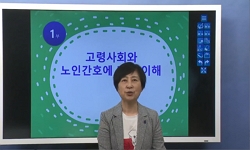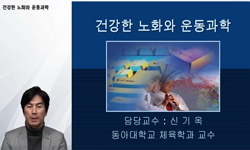<P><B>Abstract</B></P> <P>Autophagy has been implicated in delayed aging and extended longevity. Here, we aimed to study the possible effects of autophagy during the progression of replicative senescence, which is one of...
http://chineseinput.net/에서 pinyin(병음)방식으로 중국어를 변환할 수 있습니다.
변환된 중국어를 복사하여 사용하시면 됩니다.
- 中文 을 입력하시려면 zhongwen을 입력하시고 space를누르시면됩니다.
- 北京 을 입력하시려면 beijing을 입력하시고 space를 누르시면 됩니다.


A progressive reduction in autophagic capacity contributes to induction of replicative senescence in Hs68 cells
한글로보기https://www.riss.kr/link?id=A107703090
- 저자
- 발행기관
- 학술지명
- 권호사항
-
발행연도
2017
-
작성언어
-
- 주제어
-
등재정보
SCOPUS,SCIE
-
자료형태
학술저널
-
수록면
18-25(8쪽)
- 제공처
-
0
상세조회 -
0
다운로드
부가정보
다국어 초록 (Multilingual Abstract)
<P><B>Abstract</B></P> <P>Autophagy has been implicated in delayed aging and extended longevity. Here, we aimed to study the possible effects of autophagy during the progression of replicative senescence, which is one of the major features of aging. Human foreskin fibroblasts, Hs68 cells, at an initial passage of 15 were serially cultured for several months until they reached cellular senescence. A decrease in cell proliferation was observed during the progression of senescence. Induction of replicative senescence in aged cells (at passage 40) was confirmed by senescence-associated β-galactosidase (SA-β-gal) activity that represents a sensitive and reliable marker for quantifying senescent cells. We detected a significantly increased percentage (%) of SA-β-gal-positive cells at passage 40 (63%) when compared with the younger SA-β-gal-positive cells at passage 15 (0.5%). Notably, the gradual decrease in basal autophagy coincided with replicative senescence induction. However, despite decreased basal autophagic activity in senescent cells, autophagy inducers could induce autophagy in senescent cells. RT-PCR analysis of 11 autophagy-related genes revealed that the decreased basal autophagy in senescent cells might be due to the downregulation of autophagy-regulatory proteins, but not autophagy machinery components. Moreover, the senescence phenotype was not induced in the cells in which rapamycin was added to the culture to continuously induce autophagy from passage 29 until passage 40. Together, our findings suggest that reduced basal autophagy levels due to downregulation of autophagy-regulatory proteins may be the mechanism underlying replicative senescence in Hs68 cells.</P> <P><B>Highlights</B></P> <P> <UL> <LI> Gradual decrease in basal autophagy coincides with replicative senescence induction. </LI> <LI> Autophagy is inducible by rapamycin in senescent cells. </LI> <LI> Senescent cells show decreased expression of autophagy-related genes. </LI> <LI> Rapamycin-induced autophagy suppresses replicative senescence. </LI> </UL> </P>




 ScienceON
ScienceON






